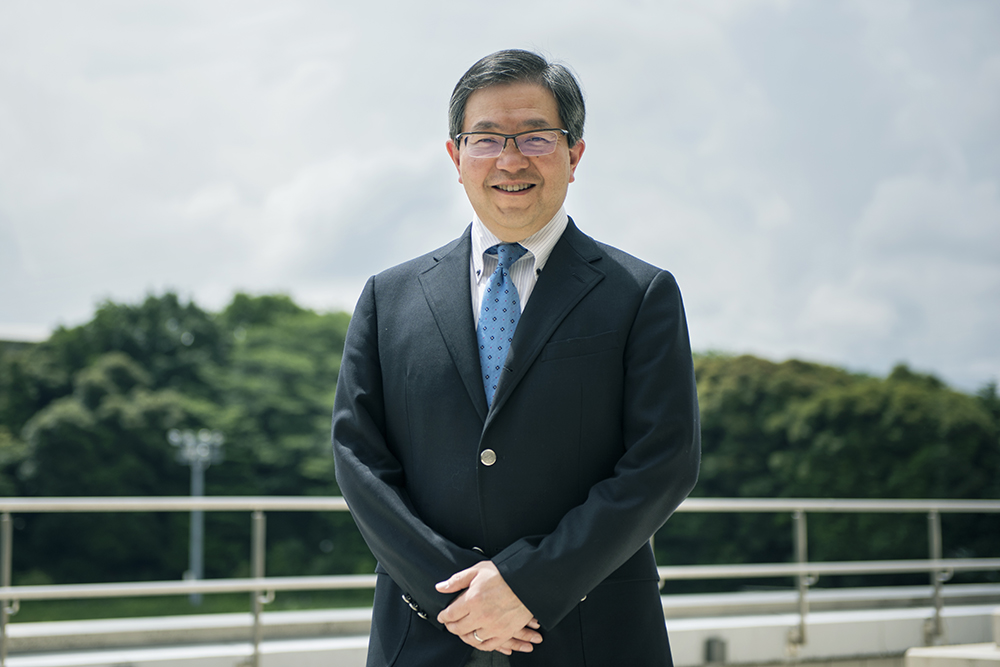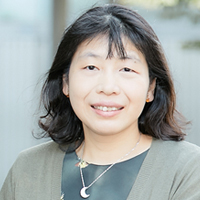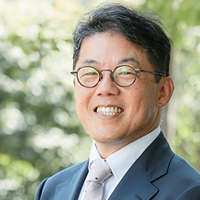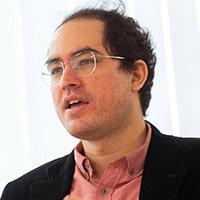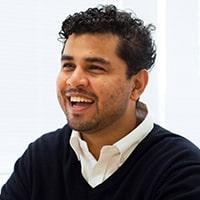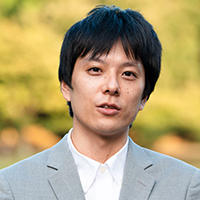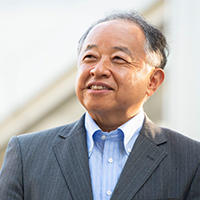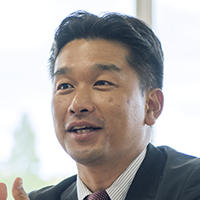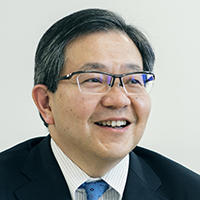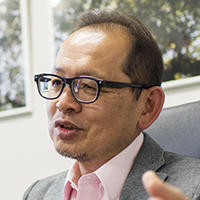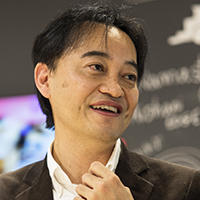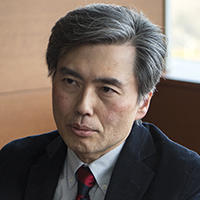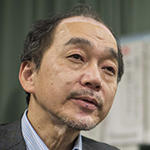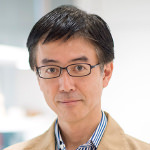SDM Voice | Prof. Tetsuya Toma
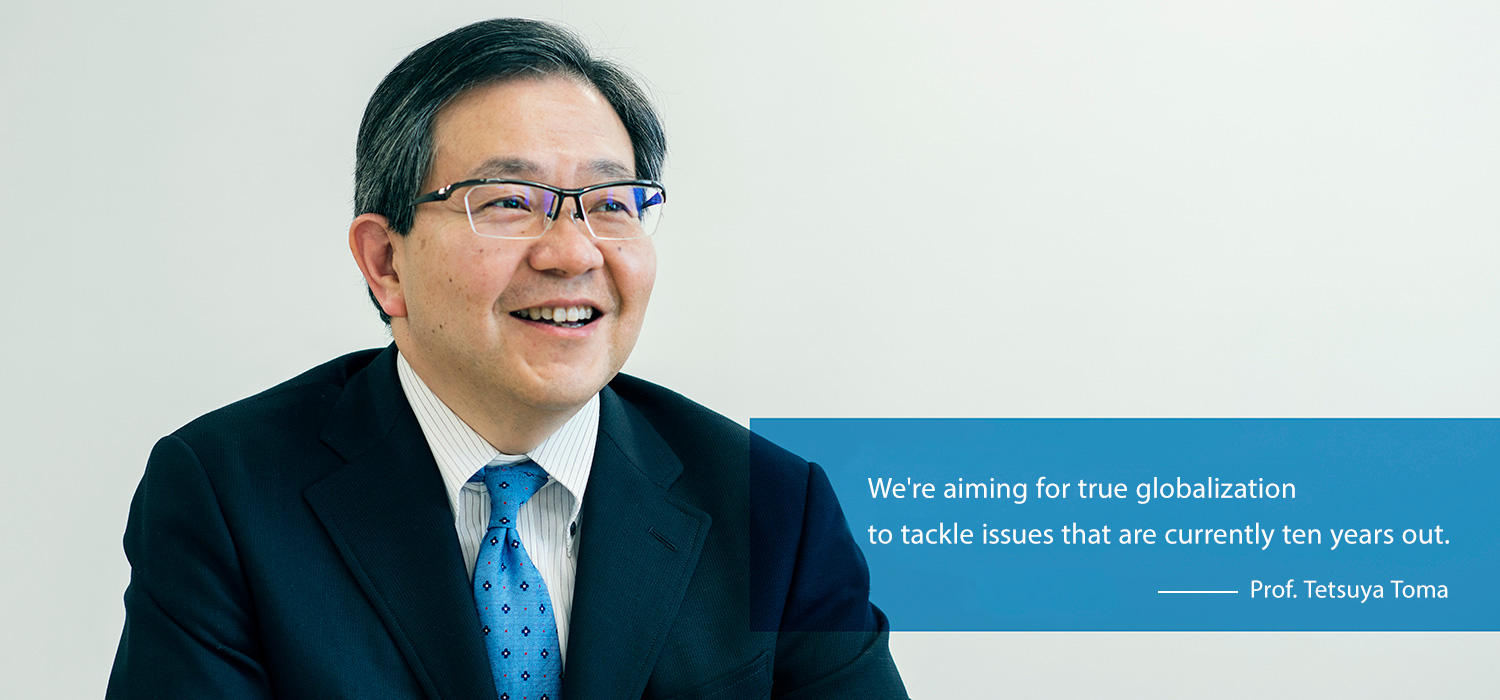
Professor Tetsuya Toma, who looks forward to celebrating SDM’s 10th anniversary in 2018, likens the school to an all-you-can-eat buffet. We sat down with Prof. Toma to talk about his current aspirations as well as his focus on project management, which is at the core of SDM.
Profile
Tetsuya Toma
Professor, Graduate School of System Design and Management, Keio University
Professor Tetsuya Toma was formerly an Advanced Product Development Specialist for 3M. His areas of expertise include program/project management and communication design for communities such as medical/health care, education, and local resource utilization. As a global enterprise development engineer, he has amassed abundant project management experience abroad and has developed various new products for electronics markets and successfully introduced them to the global market. Known for his extensive experience and flexible project management skills, Prof. Toma has won several company awards.
Fiber Optics to Open Up New Fields in Medicine, Education, and Community
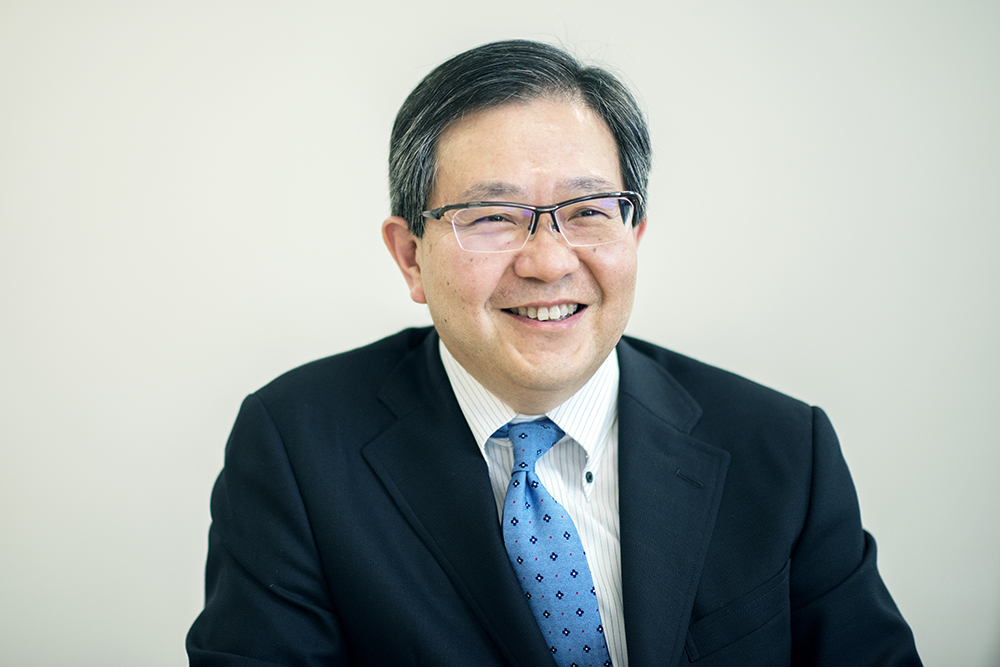
In my lab, research is carried out in three main fields: medical and wellness, education, and community. I initially specialized in the study of optical materials such as optical fiber and liquid crystal displays, and by combining those with telecommunications, I have experimented with their real-world application to deliver high definition video in real time, specifically in the areas of medicine and education. We hope to make remote conversations feel like they are happening face to face, to make more authentic communication possible, and to make images look as if they were right there in front of you.
In combining optical communication and medical treatment, we are engaged in research with dermatologists, for example, who may be able to use telemedicine to treat patients remotely. We need a truly high-definition image for the doctor to be able to see and understand the state of the patient's skin. But even in the field of dermatology, where most details can only be seen with the naked eye for diagnosis, upwards of 80-90% of skin diseases can now be diagnosed remotely. The remaining 10-20% of cases are those that require taking samples and examining them with a microscope, so working remotely would be difficult in the first place.
My recent research, done together with Project Professor Iwane Maida, focuses on how to deal with the latency that occurs when transferring video data. Video files can be quite large, so a delay is inevitable when trying to send them. In medical care, this is a major issue we need to address since we are planning to use this technology for remote surgery. Due to the difficulties of reducing this latency to zero, we are starting to look at how to best adapt to it. Our research takes a cognitive science approach to understanding how humans respond perceptually to latency and what kinds of stress occur. And in order to think about the risks and processes of working remotely under the assumption of latency, we need to employ system design thinking.
The research has become much more than merely the remote transmission of images. Communication as a whole must be taken into account. We have begun new communication-related studies on interpersonal dialogue and community building. Our education research was initially centered around remote learning, but we decided to focus on education itself, with a particular focus on active learning and human resource development with an eye for entrepreneurship.
Looking forward, I hope to further deepen our understanding of community. It's something that many students have expressed an interest in recently. While there are already plenty of case studies on community, they are too often based on the instincts and personal experiences of a community leader of some sort and fail to establish a theoretical process. So even if you try to imitate the successes in these case studies, it is very difficult to replicate their results. But I hope that by taking a system design approach to investigating case studies both in Japan and abroad we can create a new and unique system that can be applied to Japanese communities.
I primarily teach courses on project management. But even great ideas for systems and design thinking are dead in the water without proper scheduling and budgeting. I lecture on how to make and execute a game plan and how to incorporate feedback to recover from a plan gone wrong. Project management is essentially the repetition of this feedback loop to attain specific goals. Students are able to efficiently learn the PMBOK® (Project Management Body of Knowledge)--the international standard for project management--through videos and prior review. I aim to incorporate these concepts into hands-on, practical exercises in class.
Toward True Globalization
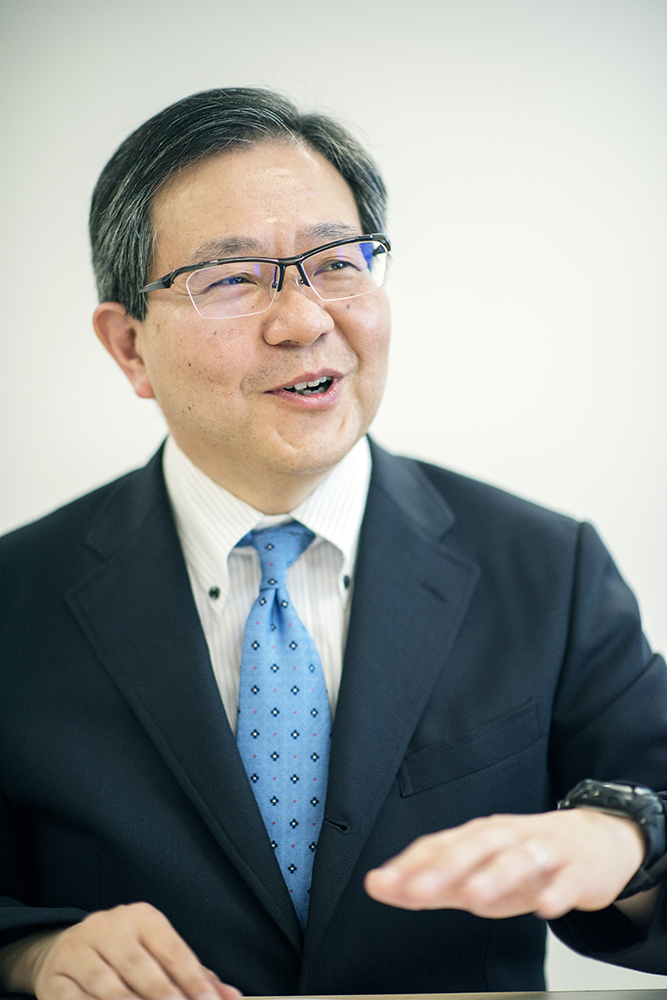 I always think of SDM as an all-you-can-eat buffet. One big reason is that unlike at a regular restaurant, you don't receive a menu at SDM. Here, a diverse range of specialties are lined up like a buffet. You have to get up and see for yourself what is available and explore what it is that you want and need. You have to try many different things without being too picky. Don't you think it would be a shame to miss out on a smorgasbord of cuisines because you claim to only like Italian or Japanese food? It's important to take the initiative to go out and learn new things instead of staying cooped up in any single laboratory.
I always think of SDM as an all-you-can-eat buffet. One big reason is that unlike at a regular restaurant, you don't receive a menu at SDM. Here, a diverse range of specialties are lined up like a buffet. You have to get up and see for yourself what is available and explore what it is that you want and need. You have to try many different things without being too picky. Don't you think it would be a shame to miss out on a smorgasbord of cuisines because you claim to only like Italian or Japanese food? It's important to take the initiative to go out and learn new things instead of staying cooped up in any single laboratory.
SDM celebrates its 10th anniversary in 2018. As illustrated in my buffet example, SDM itself is a microcosm of a society where diverse value systems coexist in harmony with one another, without being limited to any one field. It is a complex organization made up of a variety of elements--a true system. That may be one reason why it has been so difficult to provide a good description of what it is we do here at SDM. How we transform over the next ten years will be both a huge task and a source of enjoyment for me.
I have high expectations for the new students who will make SDM's transformation a reality. At SDM, learning is not a one-way street. We seek individuals who can explain their expertise to those around them and influence one another in a manner true to the Keio philosophy of hangaku hankyo--an environment where students and teachers learn from one another, regardless of age or social standing. There are plenty of hands-on workshops and group work, so I would like to welcome to SDM charismatic personalities, effective communicators, and leaders who can demonstrate expertise in their respective fields. With a large number of international students, English language proficiency is also a valuable asset. I would like us to successfully overcome the language barrier to promote further globalization.
Where project management is concerned, globalization is a matter of great urgency. Around the world, Japanese project management is known for its excellence, and we receive many inquiries from abroad about studying in Japan. I believe that in order to meet these international demands, SDM must tackle the challenges of how to provide a curriculum where students can learn the project management skills needed to succeed globally. We must also better communicate the quality of our program to the rest of the world. I believe SDM must reevaluate the significance behind its project management curriculum in order to gain a mutual understanding internally. Only then can our entire faculty work together to inform Japan and the world of our advanced project management education and the high quality of our research.
